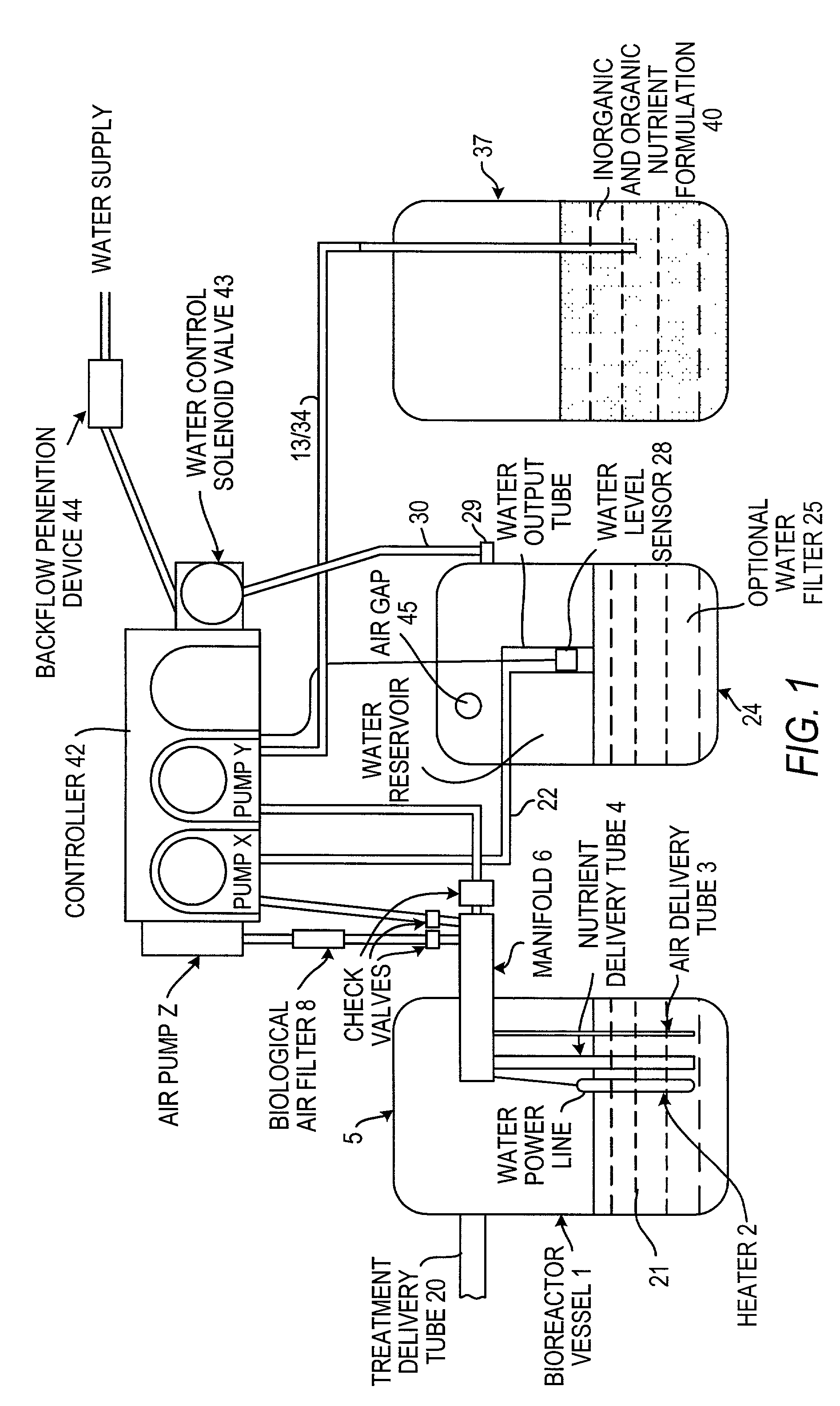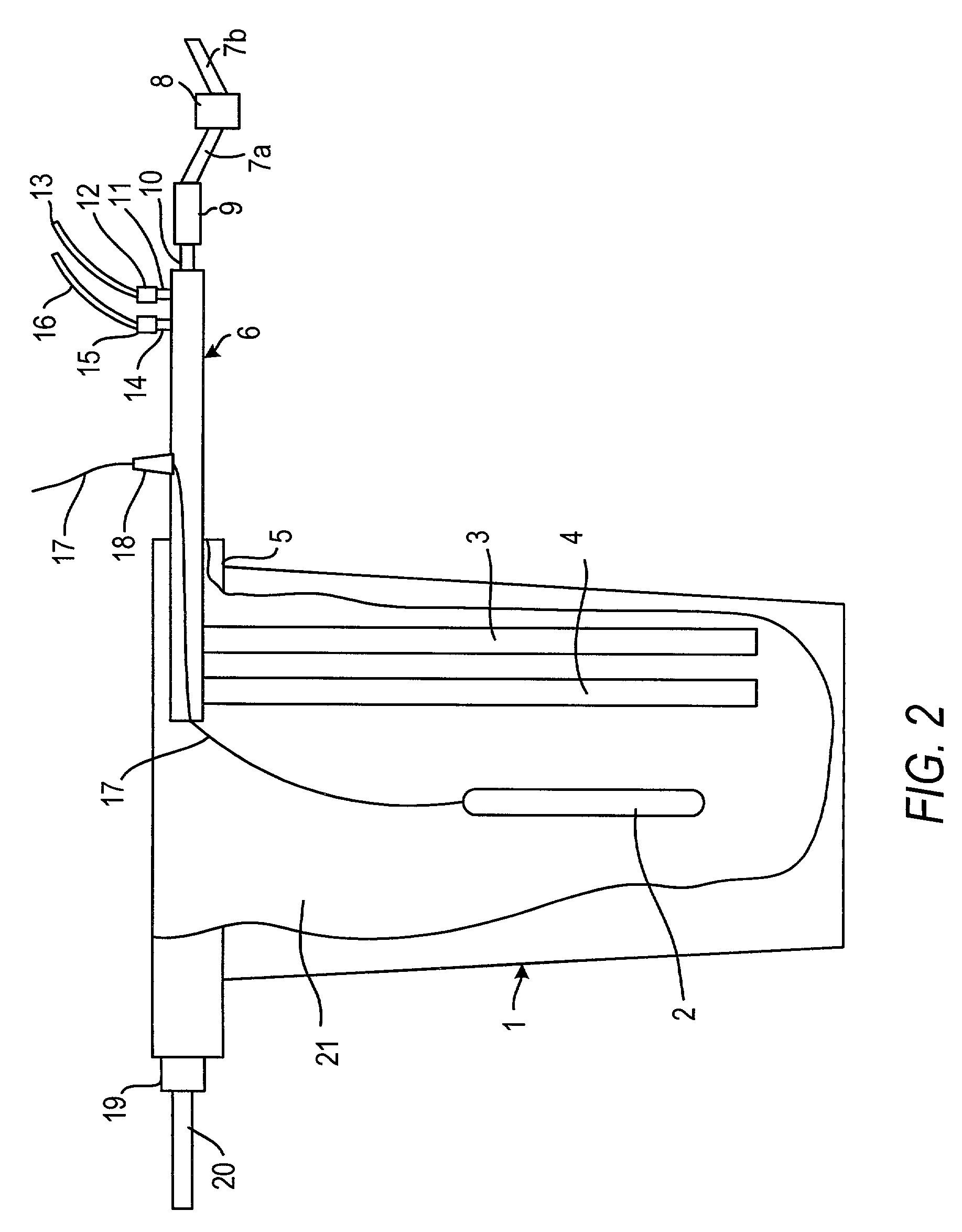Method for biological treatment of environmental contaminants and waste
a technology for biological treatment and environmental contaminants, applied in the field of methods, can solve the problems of affecting the ability of the trap to operate efficiently or at all, affecting the ability of the trap to operate efficiently, and often hindering the reaction of biodegradation
- Summary
- Abstract
- Description
- Claims
- Application Information
AI Technical Summary
Benefits of technology
Problems solved by technology
Method used
Image
Examples
Embodiment Construction
[0024]An apparatus according to the present invention comprises five main subsystems: a controller unit; a bioreactor; a potable water reservoir and regulator; pumping means and a nutrient container. Each subsystem constitutes a separate part of the invention.
[0025]A controller unit houses and protects electronic components and isolates electrical components, along with fuses and electrical boards, and connections for safe operation of the system and to comply with applicable standards. The controller is in communication with the other main subsystems of the apparatus. More specifically, the controller will regulate the function of the pumping system and / or the solenoid, and at least one timer. The solenoid is regulated by a timer and any pump(s) may be controlled by separate timer devices but are responsive to the at least one timer device. The types and numbers of pumps are not critical. For instance, a pump may be positioned to operate each input into the bioreactor, e.g. from wa...
PUM
| Property | Measurement | Unit |
|---|---|---|
| temperature | aaaaa | aaaaa |
| pH | aaaaa | aaaaa |
| salinity | aaaaa | aaaaa |
Abstract
Description
Claims
Application Information
 Login to View More
Login to View More - R&D
- Intellectual Property
- Life Sciences
- Materials
- Tech Scout
- Unparalleled Data Quality
- Higher Quality Content
- 60% Fewer Hallucinations
Browse by: Latest US Patents, China's latest patents, Technical Efficacy Thesaurus, Application Domain, Technology Topic, Popular Technical Reports.
© 2025 PatSnap. All rights reserved.Legal|Privacy policy|Modern Slavery Act Transparency Statement|Sitemap|About US| Contact US: help@patsnap.com



